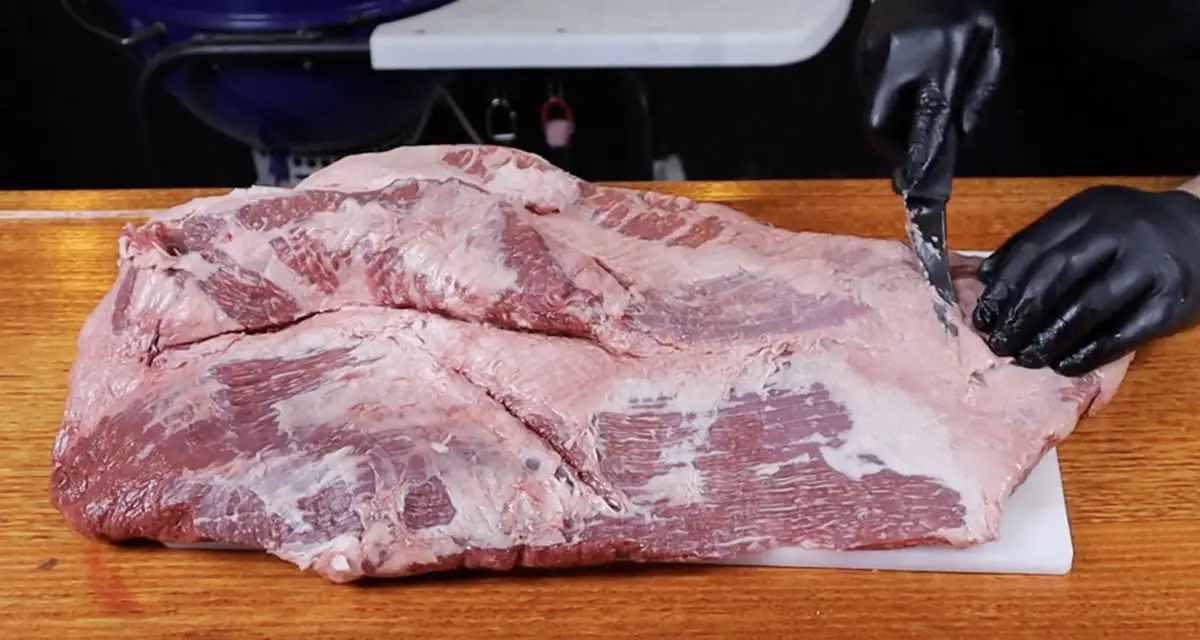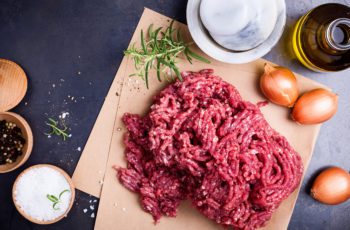Saffron tastes subtly sweet, floral, and slightly earthy. It often has a hint of honey and hay.
Saffron is one of the most prized spices globally, known for its unique flavor and vibrant color. This spice is derived from the stigma of the Crocus sativus flower, often referred to as the “saffron crocus. ” Due to its labor-intensive harvesting process, saffron is one of the most expensive spices by weight.
Its distinct taste and aroma make it a coveted ingredient in various cuisines, especially in Persian, Indian, and Mediterranean dishes. Many chefs and home cooks use saffron to elevate the flavor profile of their recipes. It also imparts a beautiful golden hue to dishes, making them visually appealing.
Introduction To Saffron
Saffron, often called the “red gold,” is a spice with a unique flavor. It has been used in cooking and medicine for centuries. Understanding its taste starts with knowing its origin and history.
Origins And History
Saffron comes from the flower of Crocus sativus. This flower blooms in fall and has three red stigmas. These stigmas are handpicked and dried to make saffron. The spice has ancient roots, dating back over 3,000 years.
It first grew in Greece and later spread to Asia and Europe. Ancient texts from Greece, Egypt, and India mention saffron. It was prized for its color, taste, and medicinal properties. Today, Iran is the largest producer of saffron, followed by India, Spain, and Greece.
Culinary Significance
Saffron is a star ingredient in many dishes. Its unique taste is a mix of sweet and floral. It has earthy undertones and a slight bitterness.
Many famous dishes use saffron. These include Spanish paella, Italian risotto, and Indian biryani. Saffron not only adds flavor but also a vibrant yellow color to food. A small pinch of this spice can transform a dish.
Here is a table showing some popular dishes that use saffron:
| Dish | Country |
|---|---|
| Paella | Spain |
| Risotto alla Milanese | Italy |
| Biryani | India |
| Bouillabaisse | France |
Using saffron in cooking requires care. A small amount goes a long way. Steep saffron threads in warm water or broth before adding to recipes. This releases its full flavor and color.
Unique Flavor Profile
Saffron is known for its unique flavor profile. This spice stands out with its complex taste and rich aroma. It adds a distinct touch to any dish. Let’s delve into the specifics of its flavor.
Saffron’s Aroma
Saffron has a powerful aroma that can be described as sweet and floral. Some people also notice a honey-like scent. The aroma is strong, even in small amounts. When you open a jar of saffron, the scent fills the room. The aroma is an important part of its appeal.
Primary Taste Notes
Saffron has a unique taste that is hard to describe. It is both sweet and bitter. The sweetness is subtle, while the bitterness stands out more. Here are the primary taste notes of saffron:
- Sweetness: A gentle, honey-like sweetness.
- Bitterness: A noticeable bitter edge that balances the sweetness.
- Earthy: An earthy flavor, similar to hay.
- Metallic: A slight metallic tang, adding depth.
These taste notes make saffron versatile in cooking. Its flavor can enhance both sweet and savory dishes. This spice is often used in small amounts due to its strong taste. A little goes a long way in adding flavor.
Cooking With Saffron
Saffron is a spice like no other. Its unique flavor and vibrant color can transform any dish. Cooking with saffron requires a bit of knowledge to unlock its full potential. Below, we’ll explore how to infuse flavors with saffron and pair it with other ingredients.
Infusing Flavors
Saffron needs to be soaked before use. This helps release its flavor and color. Here’s a simple method to infuse saffron:
- Crush a few saffron threads.
- Soak them in warm water, milk, or broth.
- Let it sit for 10-15 minutes.
This infused liquid can then be added to your dish. It provides a rich, aromatic flavor and a golden hue.
Another way to use saffron is to add it directly to hot dishes. This works well in soups, stews, and rice dishes. The heat helps release the saffron’s flavor.
Pairing With Other Ingredients
Saffron pairs well with many ingredients. Here are some great combinations:
| Ingredient | Flavor Profile |
|---|---|
| Seafood | Enhances the natural sweetness |
| Chicken | Adds depth and richness |
| Rice | Infuses a warm, earthy flavor |
| Lamb | Brings out bold, savory notes |
| Vegetables | Compliments earthy and sweet flavors |
In desserts, saffron pairs well with milk, cream, and sugar. It adds a luxurious touch to sweets like ice cream and puddings.
For a simple yet elegant dish, try saffron with rice. Add a pinch of saffron to your rice cooker or pot. It will turn the rice a beautiful golden color and add a subtle, aromatic flavor.
Remember to use saffron sparingly. A little goes a long way. Too much can overpower other flavors.
Cultural Context
Saffron is a treasured spice known worldwide. It’s praised for its unique taste and vibrant color. Saffron’s flavor profile can be described as earthy, sweet, and slightly bitter. Different cultures use saffron in various ways to enhance their traditional dishes.
Global Culinary Uses
Saffron is used in many cuisines around the globe. Each culture has its special dishes where saffron plays a key role.
- Middle Eastern Cuisine: Saffron is essential in dishes like biryani and saffron rice.
- Spanish Cuisine: Saffron is the star ingredient in paella.
- Indian Cuisine: Saffron adds flavor to sweets like kheer and savory dishes like biryani.
- Italian Cuisine: Saffron is used in risotto alla Milanese.
Traditional Dishes
Let’s explore some traditional dishes that use saffron:
| Dish | Country | Description |
|---|---|---|
| Paella | Spain | A rice dish with seafood, meats, and saffron. |
| Biryani | India | A mixed rice dish with meats, vegetables, and saffron. |
| Risotto alla Milanese | Italy | A creamy rice dish flavored with saffron. |
| Chicken Tagine | Morocco | A slow-cooked stew with chicken, vegetables, and saffron. |
Health Benefits
Saffron is not just a spice; it offers many health benefits. This rich spice is packed with nutrients and medicinal properties. Let’s explore its nutritional value and medicinal properties in detail.
Nutritional Value
Saffron contains essential nutrients that are beneficial for the body. It’s rich in vitamins and minerals. Here is a breakdown of its nutritional components:
| Component | Amount per 100g |
|---|---|
| Vitamin C | 80.8 mg |
| Vitamin A | 530 IU |
| Iron | 11.1 mg |
| Magnesium | 264 mg |
| Manganese | 28.4 mg |
These nutrients make saffron a valuable addition to your diet. It supports overall well-being and boosts the immune system.
Medicinal Properties
Saffron has been used in traditional medicine for centuries. It offers several medicinal properties that promote health. Here are some of the key benefits:
- Antioxidant Properties: Saffron contains antioxidants like crocin and safranal. These help to fight free radicals and reduce oxidative stress.
- Anti-Inflammatory Effects: It helps reduce inflammation in the body. This can alleviate symptoms of arthritis and other inflammatory conditions.
- Improves Mood: Saffron is known to improve mood and reduce symptoms of depression. It’s often called a natural antidepressant.
- Boosts Memory: It enhances memory and cognitive function. This makes it beneficial for brain health.
- Supports Heart Health: Saffron helps to lower blood pressure and improve cholesterol levels. It promotes a healthy heart.
Incorporating saffron into your diet can offer numerous health benefits. Its rich nutritional profile and medicinal properties make it a valuable spice.
Purchasing And Storing
Understanding how to buy and store saffron is important. It keeps its unique taste and aroma. Below are tips to help you choose quality saffron and store it properly.
Choosing Quality Saffron
To get the best saffron, look for deep red threads. The color shows that the saffron is potent and fresh.
Avoid saffron with yellow or white spots. These parts have little flavor. Also, be wary of powdered saffron. It can be mixed with other spices.
Good saffron has a strong, honey-like smell. It should not be musty or dull. Buying from trusted sellers ensures you get pure saffron.
Proper Storage Techniques
Store saffron in an airtight container. This keeps its flavor and aroma intact. Glass jars or tins work well.
Keep the container in a cool, dark place. Avoid sunlight and heat, which can make saffron lose its potency.
Use a small amount at a time. Saffron is very strong, so a pinch can go a long way.
| Storage Tips | Why It Matters |
|---|---|
| Airtight container | Preserves flavor and aroma |
| Cool, dark place | Prevents loss of potency |
| Avoid light and heat | Keeps saffron fresh |
Follow these tips to enjoy your saffron’s full flavor and aroma. This ensures that every dish you make with it is delicious and aromatic.
Saffron Substitutes
Saffron is a prized spice with a unique flavor. It’s expensive and not always available. Finding substitutes for saffron can help achieve similar flavors in dishes.
Common Alternatives
There are several common alternatives to saffron. These substitutes are more affordable and easier to find. They can mimic saffron’s color and taste.
| Substitute | Characteristics |
|---|---|
| Turmeric | Bright yellow color, earthy flavor |
| Annatto | Reddish-orange color, mild peppery taste |
| Marigold | Bright color, mild flavor |
| Safflower | Yellow color, subtle flavor |
Flavor Comparisons
Comparing flavors helps in choosing the right substitute. Saffron has a unique taste profile. It is subtly sweet with earthy undertones. Let’s see how common substitutes compare.
- Turmeric: Turmeric has an earthy, slightly bitter taste. It adds a vibrant yellow color.
- Annatto: Annatto offers a mild, peppery taste. It provides a reddish-orange hue.
- Marigold: Marigold petals have a mild flavor. They add a bright color similar to saffron.
- Safflower: Safflower has a subtle taste. It imparts a yellow color to dishes.
Each substitute has its own unique properties. Choose based on the desired flavor and color.
Frequently Asked Questions
What Does Saffron Taste Like?
Saffron has a unique taste that’s earthy, slightly sweet, and floral. It also has a hint of honey.
Is Saffron Bitter Or Sweet?
Saffron is primarily known for its subtle sweetness. It does have earthy and floral undertones.
How Can You Describe Saffron’s Flavor?
Saffron’s flavor is complex and layered. It’s earthy, sweet, and floral with a touch of honey.
Does Saffron Taste Like Any Other Spice?
Saffron’s taste is unique and doesn’t closely resemble other spices. It’s distinctively sweet and earthy.
Conclusion
Saffron offers a unique flavor profile that’s both floral and earthy. Its subtle sweetness enhances many dishes. The spice’s distinct taste can elevate your culinary creations. Experimenting with saffron can lead to delightful surprises in your cooking. Embrace this exotic spice and enjoy its rich, aromatic qualities.
Learn More About Grilling
If you want to learn more about grilling, check out these other helpful resources!











